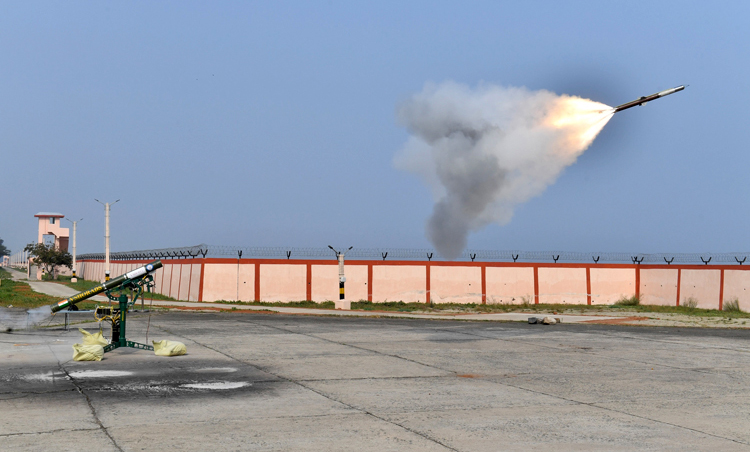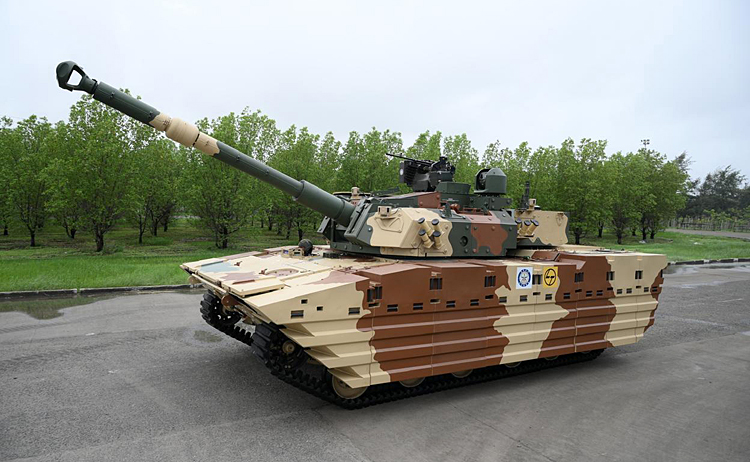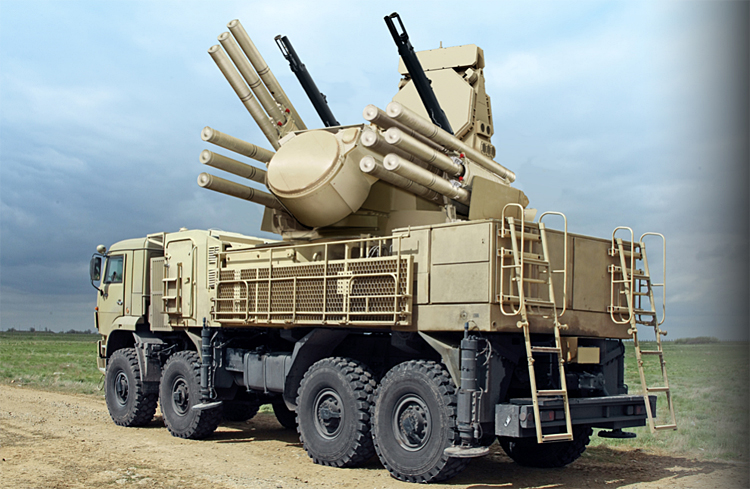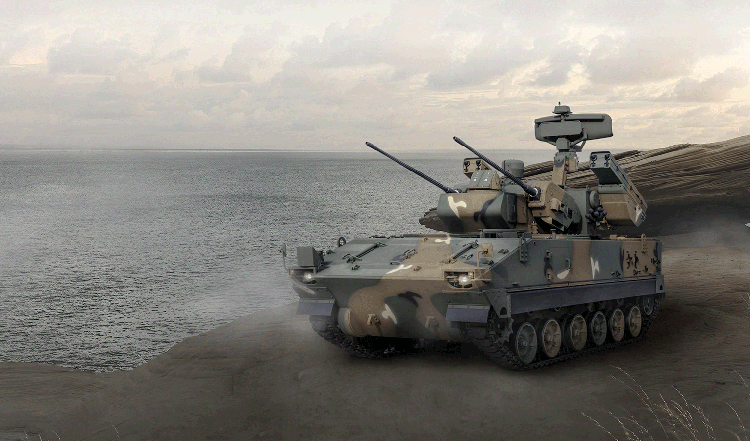INDIAN ARMED FORCES CHIEFS ON OUR RELENTLESS AND FOCUSED PUBLISHING EFFORTS

The insightful articles, inspiring narrations and analytical perspectives presented by the Editorial Team, establish an alluring connect with the reader. My compliments and best wishes to SP Guide Publications.

"Over the past 60 years, the growth of SP Guide Publications has mirrored the rising stature of Indian Navy. Its well-researched and informative magazines on Defence and Aerospace sector have served to shape an educated opinion of our military personnel, policy makers and the public alike. I wish SP's Publication team continued success, fair winds and following seas in all future endeavour!"

Since, its inception in 1964, SP Guide Publications has consistently demonstrated commitment to high-quality journalism in the aerospace and defence sectors, earning a well-deserved reputation as Asia's largest media house in this domain. I wish SP Guide Publications continued success in its pursuit of excellence.
- Operation Sindoor: Resolute yet Restrained
- India’s Operation Sindoor Sends a Clear Message to Terror and the World – ‘ZERO TOLERANCE’
- Japan and India set forth a defence cooperation consultancy framework, talks on tank and jet engines
- Terrorist Attack in Pahalgam in Kashmir: Unfolding a long surgical war against PAK
- Lt General Pratik Sharma takes over Command of Indian Army's Northern Command
New Self-Propelled AD Gun Missile System
DRDO could potentially deliver a prototype within 18 months, possibly by mid-2026 because the project leverages existing proven technologies
 |
The Author is Former Director General of Information Systems and A Special Forces Veteran, Indian Army |

The development of the Light Tank Zorawar by the Defence Research and Development Organisation (DRDO), with Larsen and Toubro (L&T) as the developmental partner, and trials commencing shortly, was reported in these columns in February 2024. These light tanks are meant for high-altitude warfare in Ladakh and Arunachal Pradesh as well as riverine areas like the Rann of Kutch which can be swiftly deployed after being transported by air. It was also reported that China's Peoples' Liberation Army (PLA) had already deployed light tanks as part of the continuing standoff along the Line of Actual Control (LAC).
The system is to be based on the chassis of the Light Tank Zorawar and will be designed to protect the Army's mechanised units; tanks and Armoured Personnel Carriers (APCs) from a range of aerial threats
Now according to news reports of March 11, 2025, the DRDO is preparing a proposal to equip the Indian Army with a Self-Propelled Air Defence Gun Missile System (ADGM-SP), to enhance the Indian Army's air defence capabilities. The system is to be based on the chassis of the Light Tank Zorawar and will be designed to protect the Army's mechanised units; tanks and Armoured Personnel Carriers (APCs) from a range of aerial threats. The proposed ADGM-SP represents a significant upgrade to protect mobile ground forces. It combines a twin 30mm gun system with the Very Short-Range Air Defence System (VSHORAD) with a portable missile system. The combination allows the ADGM-SP to effectively engage various aerial threats, including drones, helicopters and low flying aircraft.

The system is to be will be mounted on the 25-tonne chassis of the Light Tank Zorawar, a platform jointly developed by the DRDO and L&T specifically for high altitude operations. This provides the ADGM-SP with exceptional mobility and adaptability across India's varied terrains. The Zorawar Light Tank underwent successful trials in Ladakh during 2024, demonstrating superior performance in challenging high-altitude environments. Utilising the existing proven chassis allows the DRDO-L&T to offer a cost-effective and indigenous solution addressing the Army's pressing need for enhanced protection of its mechanised units, particularly along the borders with China and Pakistan.
The proposed ADGM-SP is to have several key features, which would include:
- Twin 30mm Guns – these rapid firing cannons would provide close range defence against low firing targets, offering a reliable gun-based defence;
- VSHORAD Integration – the inclusion of missiles, likely based on DRDO's laser guided VSHORADS (successfully tested in 2002, according to DRDO reports). Provides extended range and accuracy against fast moving threats like drones and helicopters. VSHORADS are designed to neutralise low-altitude aerial threats at short ranges;
- Low Radar Cross Section (RCS) 3-D Acquisition and Fire Control Radar – the compact radar uses Advanced Electronically Scanned Array (AESA) technology and digital beam-forming. It allows for Track While Scan (TWS) capability and is designed to function effectively even in environments with heavy electronic jamming;
- Electro-Optical Fire Control System (EOFCS) – this system includes a Thermal Imaging (TI) sight and an optical sight for precise tracking. It ensures the system can acquire and engage targets in all weather conditions, by day or night;
- Fire Control Computer (FCC) – the FCC integrates data from the radar and the EOFCS, enabling smooth transition between gun and missile modes to provide the most effective response; six, Dual Mode Engagement – for the adaptability, system will be able to engage targets by using either Fire Control Radar or the EO FCS.

The indigenous ADGM-SP is expected to compete with international systems like the South Korean K30 Biho Hybrid and Russia's Pantsir–S1, which the Indian Army has previously considered. The DRDO-L&T design, however, offers advantages in terms of cost effectiveness, customisation to Indian requirements, and strategic independence, aligning with the Atmanirbhar Bharat initiative. The Zorawar's lightweight (25 tonnes), compared to 40 plus tonnes of many existing Self-Propelled Anti-Aircraft Guns (SPAAG) systems, makes it particularly suitable for deployment in high-altitude areas like Ladakh and Sikkim, where heavier systems may face operational limitations.
The indigenous ADGM-SP is expected to compete with international systems like the South Korean K30 Biho Hybrid and Russia's Pantsir–S1, which the Indian Army has previously considered
The news report states that if the Indian Army approves the proposal, DRDO could potentially deliver a prototype within 18 months, possibly by mid-2026; because the project leverages existing proven technologies, the Zorawar platform, VSHORADS missiles (already in limited productions) and established radar/EOFCS systems delivered from projects like the Akash missile program. While the twin 30mm guns may require integration testing, potentially using components from Ordnance Factory upgrades or new designs. The news report further states that obtaining full production clearance could take more than four years; with the system's induction in 2029 or even later.

The long timeframe is attributed to comprehensive and rigorous trials by the Indian Army to evaluate the system's mobility, firepower, and survivability across diverse terrains, including deserts, plains and mountains. To add to this is the Army's requirements for day and night operation, resistance to electronic jamming, and seamless integration of radar and EOFCS systems will necessitate thorough validation, a process that has extended timelines for other DRDO projects in the past.
We need to seriously address the overall process from developing the prototype(s) to the induction of systems, if we really want to catch up with the lead that China has over us
While comprehensive and rigorous trials by the Indian Army are undoubtedly required considering the diverse terrains involved, we need to seriously address the overall process from developing the prototype {s) to the induction of systems, if we really want to catch up with the lead that China has over us. For example, the gun for the indigenous ADGM-SP has already been developed by L&T with programmable munition, according to sources. But if we are confident that this indigenous ADGMP-SP would be able to compete with similar international systems, why go through the archaic rigmarole of first proposing the system and after obtaining approval go for developing the prototype(s)?
Given the above-mentioned key characteristics, the system is sure to also attract foreign buyers, especially with its cost effectiveness. Isn't it time we change to proposing systems together with offering the prototypes, especially when indigenous systems are being given priority over imports? Similarly, the Indian Army could go for simultaneous trials in different terrains to save time provided an adequate number of prototypes are made available. It is about time that we actually change to speed up the induction of new systems, rather than only talking about the issue.





